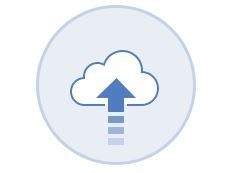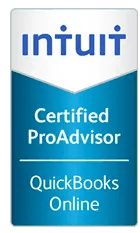401(k) VS Roth IRA
Saving for retirement is important, since the average American spends 20 years in retirement.

Experts estimate that you will need about 70 percent of your pre-retirement income to maintain your standard of living when you stop working, unless you want to live with one of your children. Not only is building your retirement account a good thing, but there are also many tax benefits that come along with putting money aside.
FOR BUSINESSES :
Corporations, sole proprietors and partnerships can set up and offer retirement accounts for their employees. They can offer 401(k)’s, profit sharing plans, or both 401(k) and profit sharing plans. The following is a brief description of the various retirement plans available for small businesses.
401(k) Plans With Employers :
This retirement account takes its name from the IRS code. It was enacted into law in 1978 to allow taxpayers a break on deferred income. These contributions reduce the taxable income on the year end W-2. Here are some highlights of a 401(k) plan:
- Employees can elect to defer up to $20,500 of their compensation.
- Employees who are age 50 or older at the end of the year can elect to defer an additional catch-up contribution of $6,500 of compensation.
- An employee can have several employers and several contribution plans, but they can only contribute the maximum amount collectively adding all the plans together.
- An employer may make a matching contribution for an employee who contributes to this retirement plan.
- The set-up of the account and contributions must be done by December 31st.
- The employer contributions must be made by the return due date including extensions.
401(k) Plans For Individuals :
A 401(k) plan for an individual, also known as the solo 401(k), is strictly for sole proprietors who have no employees (although your spouse may contribute if he or she earns income from the business). The solo 401(k) works much the same as traditional 401(k) plans offered by companies, as well as SEP IRAs designed for the self-employed. As an employee, you can defer $20,500 of compensation for 2022, and as an employer you can contribute as much as 20% of compensation. The contributions can be made up to April 15th, but the account must be opened before December 31st of the previous year. They can be more complicated than other IRA options. If you have at least $250,000, you will need to report the benefits through IRS Form 5500 annually.
Self-Employed Profit Sharing Plan (SEP):
Anyone with self-employment (SE) income can set up a Self-Employed Profit Sharing Plan. The maximum contribution allowed is 25% of net SE income after SE tax deduction up to a maximum contribution of $ 61,000 for 2022. You can contribute to this retirement plan by April 15th for the previous tax year, unless you file an extension and are then allowed to contribute until Oct 15th or the time you file your tax return. This plan is mostly used when the business only has the owner (and spouse) and no employees.
Simple IRA:
Savings Incentive Match Plan for Employees (SIMPLE) can be a good solution for many small businesses. They are easy to set up, affordable and have simple year end paperwork. In 2022, employees can contribute up to $14,000 plus a catch up amount ($3,000) for employees that are older than 50. Employer’s matching amounts range from 1-3 percent of the total pay. Simple IRA contributions do count against the limit for your 401(k), limiting the overall options. You have to open the account by October 1st to make contributions for that year.
FOR INDIVIDUALS :
Individuals can also contribute to their retirement. Below is a list of IRA choices. Please note that there are income limitations.
Traditional IRAs : Traditional IRAs allow you (or your spouse, if you file a joint return) to make tax deductible contributions to a traditional IRA. Contributions and earnings on the traditional IRA will not be taxed until they are distributed. Here are some facts regarding traditional IRA’s:
- The maximum contribution to your traditional IRA for 2022 will be the smaller of $6,000 or your taxable compensation for the year.
- If you are age 50 or older, you may make an additional catch-up contribution of $1,000.
- You can make traditional IRA contributions up to the age of 70 ½. If you file a joint return with your spouse, only one of you needs to have compensation to contribute to a traditional IRA.
- If you are covered by a retirement plan at work, your deduction for contributions to a traditional IRA is reduced (phased out) if your modified AGI is more than $68,000 if you are single and more than $109,000 if you are married.
- If your spouse is covered by a retirement plan at work, but you are not, your deduction is phased out if your modified AGI is more than $204,000. If your modified AGI is $214,000 or more, you cannot take a deduction for contributions to a traditional IRA.
- Contributions to your IRA must be made by the return due date, typically April 15th of the following year, even if an extension is filed.
- You must generally start receiving required minimum distributions from your traditional IRA by April 1st of the year following the year in which you reach age 70 ½. The required minimum distribution for any year after the year you turn 70 ½ must be made by December 31st of that later year.
Roth IRAs : A Roth IRA is an individual retirement plan that is subject to many of the rules that apply to a traditional IRA, but, unlike a traditional IRA, you cannot deduct contributions to a Roth IRA, but, if you satisfy the requirements, qualified distributions are tax-free. Contributions can be made to your Roth IRA after you reach age 70 ½ and you can leave amounts in your Roth IRA as long as you live. The maximum contribution amount and catch up amounts are the same for the Roth as they are for the Traditional IRA. If your modified AGI is ($144,000 for single filers or $214,000 for joint filers) or more you cannot make a Roth IRA contribution.

















